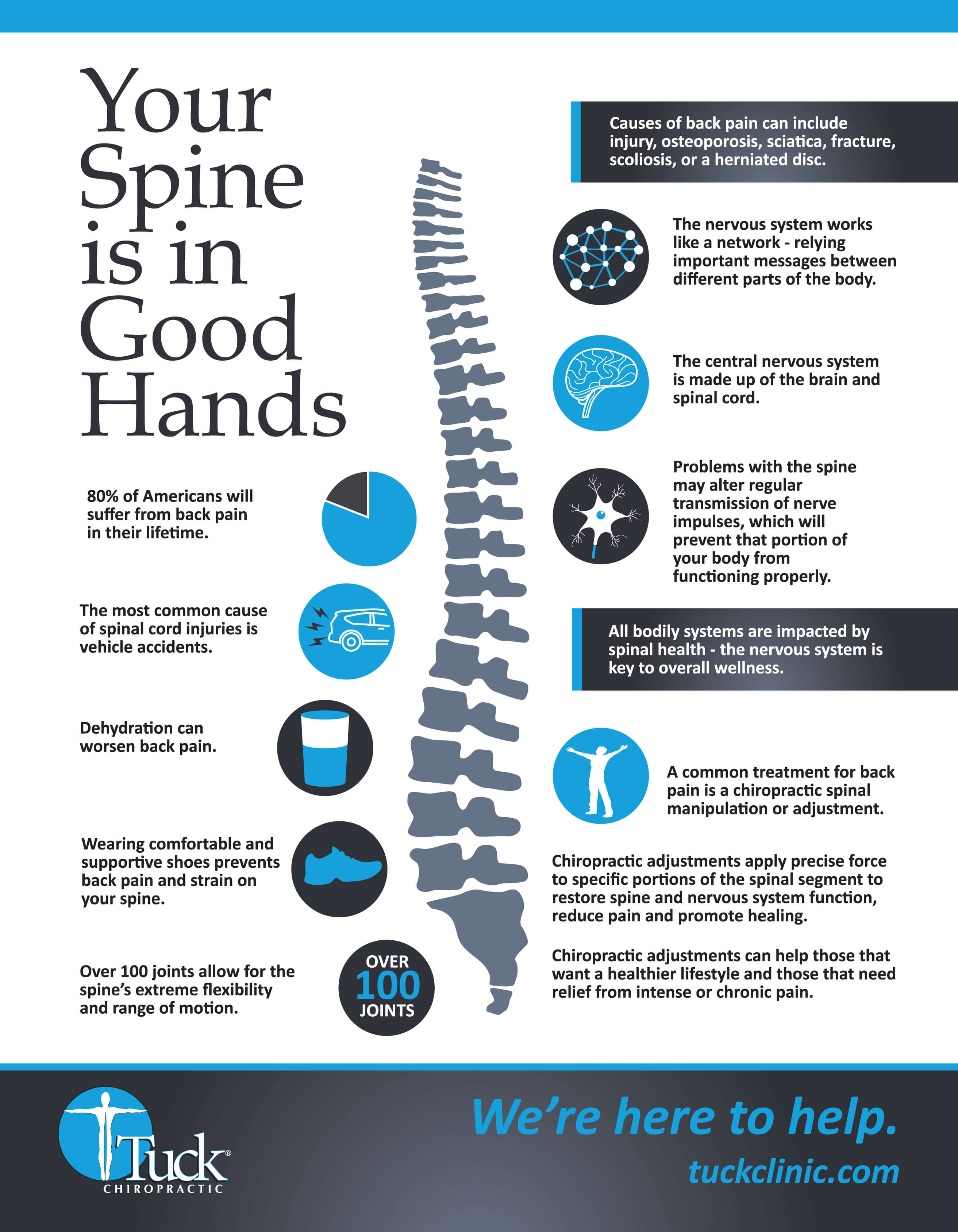The Role Of Position In Pain In The Back: Tips For Achieving And Maintaining Good Placement Throughout Your Day
The Role Of Position In Pain In The Back: Tips For Achieving And Maintaining Good Placement Throughout Your Day
Blog Article
Authored By-Kragh Thaysen
Keeping proper pose isn't almost sitting up directly; it has to do with straightening your body in a way that supports your back and minimizes the threat of neck and back pain. The way you rest, stand, and relocate throughout the day can dramatically influence your back wellness. However exactly how precisely can you make certain great positioning constantly, also throughout hectic days filled with numerous tasks? Let's dive deeper into the refined yet impactful adjustments you can make to your daily routine to keep your back happy and healthy.
Significance of Appropriate Posture
Correct stance is essential in keeping a healthy and balanced back and avoiding discomfort. When you sit or stand with good pose, your back remains in alignment, lowering stress on your muscle mass, ligaments, and joints. This alignment enables the body to distribute weight evenly, avoiding too much stress and anxiety on certain areas that can bring about pain and discomfort. By maintaining best medicine for extreme back pain lined up, you can additionally improve your breathing and digestion, as slouching can press organs and restrict their capability.
In addition, keeping great stance can improve your overall look and self-esteem. When you stand tall with your shoulders back and head held high, you emanate self-confidence and show up even more approachable. Good pose can likewise make you feel more stimulated and sharp, as it advertises proper blood flow and allows your muscles to function efficiently.
Including appropriate position into your daily routine, whether sitting at a workdesk, walking, or working out, is vital for protecting against pain in the back and promoting total well-being. Remember, a tiny adjustment in just how you hold on your own can make a significant difference in exactly how you feel and work throughout the day.
Common Postural Mistakes
When it comes to preserving good position, several people unknowingly make typical errors that can add to back pain and discomfort. Among the most common errors is slumping over or hunching over while sitting or standing. This position places too much strain on the spinal column and can bring about muscle mass inequalities and discomfort over time.
One more typical error is overarching the lower back, which can squash the natural curve of the spine and create pain. In addition, crossing legs while resting might really feel comfy, but it can produce an imbalance in the hips and pelvis, bring about postural concerns.
Utilizing a pillow that's too soft or also strong while resting can additionally influence your placement and contribute to back pain. Last but not least, frequently craning your neck to look at screens or readjusting your placement frequently can strain the neck and shoulders. Being mindful of these typical postural blunders can help you preserve much better placement and lower the threat of pain in the back.
Tips for Correcting Alignment
To improve your alignment and reduce pain in the back, it's essential to focus on making small modifications throughout your day-to-day regimen. Begin by bearing in mind your position. When resting, ensure your feet are level on the flooring, your back is straight, and your shoulders are kicked back. Stay clear of slouching or leaning to one side. Usage ergonomic chairs or pillows to sustain your lower back.
When standing, disperse your weight equally on both feet, maintain your knees a little curved, and tuck in your hips. Involve your core muscular tissues to sustain your spine. Take breaks to extend and walk if you have an inactive task. Incorporate exercises that enhance your core and back muscular tissues, such as planks or bridges.
While resting, make use of a pillow that supports the all-natural contour of your neck to preserve appropriate spine alignment. Stay clear of sleeping on your tummy, as it can stress your neck and back. By being mindful of these ideas and making small changes, you can gradually correct your placement and reduce pain in the back.
Get the facts
Keep in mind, keeping excellent posture is vital to avoid back pain and advertising spinal health. By being mindful of your alignment, distributing weight equally, and involving your core muscle mass, you can decrease pressure on your back and reduce the danger of pain and injury. Incorporate ergonomic support, take normal breaks to extend, and enhance your core and back muscular tissues to keep correct alignment throughout the day. Your back will thank you for it!
